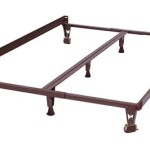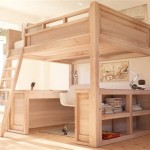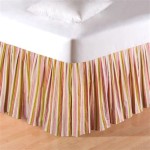DIY Bunk Beds: Full Over Queen
Building a bunk bed is a challenging but rewarding project. A DIY full-over-queen bunk bed offers a stylish and space-saving sleeping solution for a bedroom, guest room, or even a playroom. This type of bunk bed provides ample sleeping space for adults and children, making it ideal for families or guests who need an extra bed. This article will guide you through the process of building your own full-over-queen bunk bed, giving you an understanding of the key components, materials, and steps involved.
Key Considerations for a Full Over Queen Bunk Bed
Before you start building your bunk bed, there are a few important considerations to keep in mind. First, you need to ensure you have the right size and dimensions. It's essential to consider the space available in the room and the desired height of the bunk bed. Second, you should think about the desired style, as this will determine the type of lumber and design elements you will use. Finally, you must ensure you have the necessary tools and equipment, including a saw, drill, sander, and measuring tape.
Materials and Tools:
The materials and tools required for a DIY full-over-queen bunk bed project can vary depending on the design and complexity. However, the following is a general list of essential items you'll need:
- Lumber: Consider using sturdy lumber options like pine, oak, or maple for frame construction, and select appropriate lumber types for bed slats and supports.
- Screws and Fasteners: Choose screws and fasteners suitable for the lumber type and intended use, ensuring they are long enough for stability and strength.
- Wood Glue: Use a high-quality wood glue to provide extra strength and prevent wood from separating.
- Stains and Finishes: Select a Stain or paint to match your style and protect the wood.
- Tools: A saw (circular, miter, or jigsaw), drill, sander, measuring tape, level, pencil, safety glasses, and safety equipment.
Building the Frame:
The frame is the foundation of your bunk bed. You will need a few essential components, including a headboard, footboard, side rails, and a center support beam. The first step is to cut the lumber to the desired dimensions based on your design. Then, use screws and wood glue to secure the headboard and footboard to the side rails. Finally, attach the center support beam to the side rails for extra stability.
Here are the critical steps to follow when constructing the frame:
- Cut the lumber. Use a saw to cut the lumber to the required lengths for the headboard, footboard, side rails, and center support beam.
- Assemble the headboard and footboard. Attach the headboard and footboard to side rails using screws and wood glue.
- Secure the center support beam. Attach the center support beam to the side rails, ensuring it is securely fastened.
- Repeat for the lower bed frame. Repeat steps 1-3 for the lower bed frame, ensuring the dimensions are slightly larger to accommodate the mattress size.
Constructing the Ladder:
Now that the frame is complete, it's time to build the ladder. The ladder can be built separately and attached to the bunk bed later. A simple ladder can be created using two vertical rails and a series of rungs. Measure and cut the lumber for the rails and rungs, and then attach the rungs to the rails using screws and wood glue. Ensure the spacing between the rungs is adequate for comfortable climbing. Remember to align the ladder with the frame and attach it securely for safety.
Adding the Slats:
The slats are essential for providing support for the mattress. The slat system can be created using wooden slats or a metal slat system. For a wooden slat system, measure and cut the slats to the desired length. Then, attach the slats to the frame using screws. If you are using a metal slat system, follow the manufacturer's instructions for installation. Before attaching the slats, ensure you have a solid base structure to prevent sagging.
Finishing Touches:
Once the bunk bed is assembled, you can add finishing touches like sanding, staining, and painting. Sanding the surface will create a smooth and even finish. Stain or paint the lumber to match your desired style and protect the wood. You can also add decorative elements like moldings or trim to enhance its appearance.
Safety Precautions:
Safety should always be a top priority during the construction process. It's essential to wear safety glasses and gloves when working with tools. Always use sharp and appropriate tools, and ensure the work area is clean and free of clutter. It's also crucial to follow the manufacturer instructions for any hardware or fasteners used.
Building your own bunk bed is a challenging but rewarding project. With a little effort and planning, you can create a beautiful and functional piece of furniture that adds character to your home. Remember to prioritize safety and accuracy throughout the process.

Modular Bunk Bed Setup Woodworking Blog S Plans How To Diy Loft

Diy Queen Over Loft Bed Plan Step By Guide For Easy Woodworking

Woodworking Bunk Bed Plans Full Over Queen Free Beds Loft

17 Easy Steps For A Diy Built In Bunk Bed Start At Home Decor

Queen Over Custom Bunk Bed Room For S Beds Diy Plans

Diy Bunk Bed Split Size How To Book Pattern Plan Easily Build King Over Queen Full Twin Beds

Simple Bunk Bed Plans Twin Over Full Ana White

Queen Over King Bunk Bed Custom Beds Designs Diy

Bunk Bed Split Size How To Book Paper Pattern Plan Diy And Easily Build King Over Queen Full Twin Beds Com

Bunk Bed Split Size How To Book Paper Pattern Plan Diy And Easily Build King Over Queen Full Twin Beds Com







